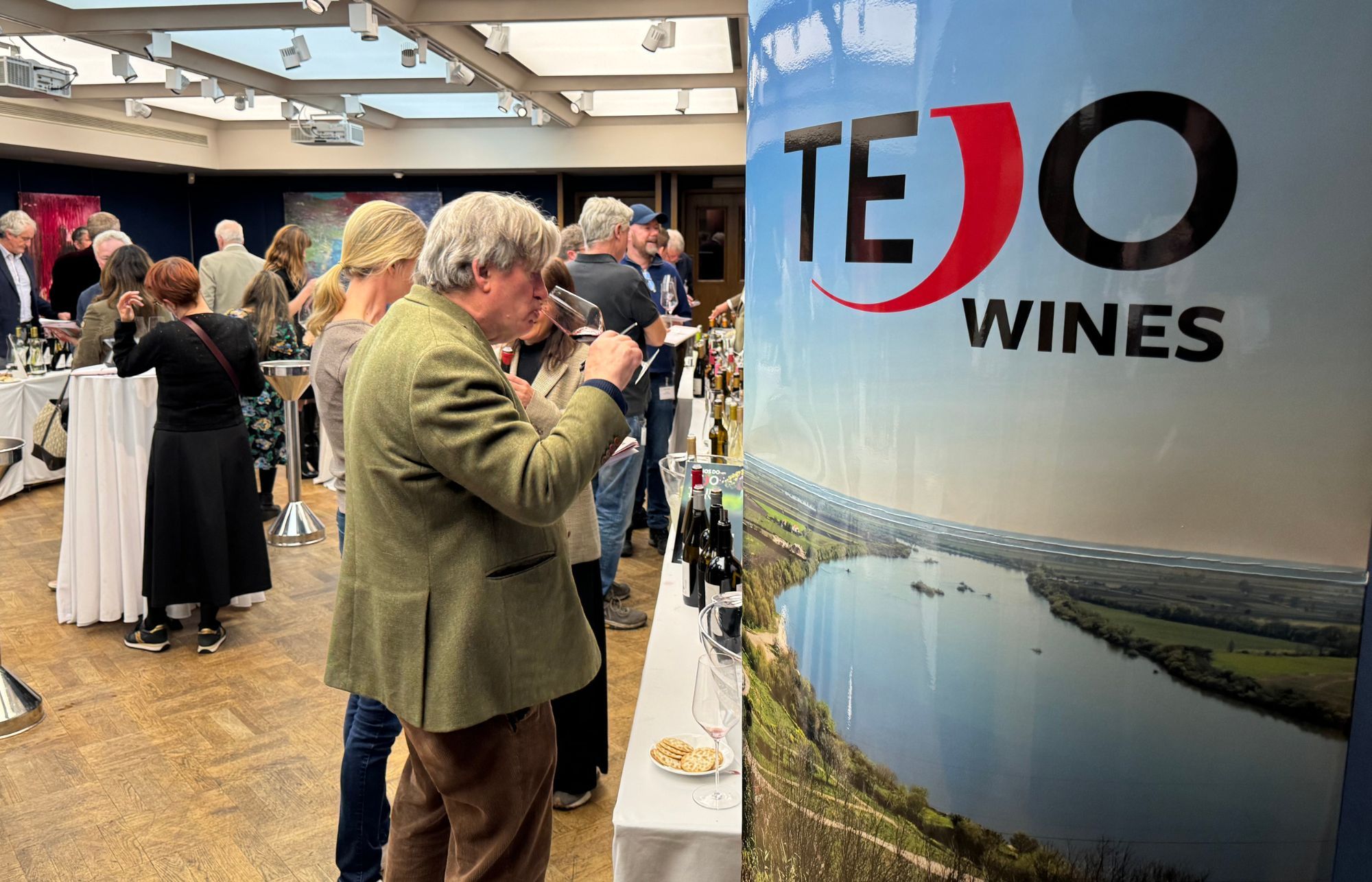Getting to go to tastings of Portuguese wines, from almost anywhere in that country, usually means you’re going to have your preconceptions challenged. The renewed confidence of producers and marketing boards in recent years is palpable as the wine world rediscovers the joys of incredibly diverse terroirs, indigenous varieties and no small amount of outstanding value.
We can now wax lyrical about the superb wines of the likes of Vinho Verde, Douro, Dão and Alentejo. Following my trip to the Wines of Tejo tasting this month, I’m now more than happy to add Tejo to that list.
The region hugs the Tejo River (anglicised as the Tagus) as it snakes out towards its estuary in Lisbon. The Tejo is the longest river in Iberia, starting around 150km east of Madrid and flowing all the way West to the Atlantic. Wine has been made in these parts for over four thousand years, with generations of Phoenicians, Romans and Visigoths all enjoying the fertile plains.
Dirceu Vianna Junior MW, in attendance to run the masterclasses, began spending more time in the region three years ago and has been impressed with the quality and diversity on show.
“Tejo is seen as a second division area by people who think they know Portuguese wines,” he began. “Journalists and industry professionals can be lazy and think only about big quantity and low quality, but it is not always the case.”
The wines on show certainly confirmed Junior’s enthusiasm.

"You could be forgiven for thinking you were in Southern Napa"
Tejo's Climate
The climate provides ideal weather for growing ripe grapes, but fruit that is still packed with freshness. This is a warm area with 2800 hours of sunlight per year so that is rarely, if ever, a problem to achieve. Of course, the river allows sea breezes to travel deep into the valley, cooling the plains and gentle slopes to both the north and south of the river.
It’s the diurnal range, however, that appears to play the biggest role in keeping that all-important freshness in the grapes.
One of Tejo’s most dramatic natural phenomena is the dense morning fogs that are sucked up from the coast into the opening reaches of the river providing a stark cooling effect.
“When you see these fogs coming through,” recalled Junior, “you could be mistaken for thinking you’re in southern Napa. It’s uncanny.” These fogs mean morning temperatures can reach as low as 10°C before reaching as high as 40°C during the afternoons.

The sub-regions of Tejo
Tejo is split into three sub-regions. To the north lies Beirro, an area of rolling hills and sweeping plains that is famed for its clay-and-limestone soils as the land rises into the mountains that protect the area from the worst of the Atlantic weather patterns.
The soils do, however, change fairly dramatically across the area, with terraced, schist soils surrounding the medieval town of Tomar in particular.
“Think about it,” exclaimed Junior, “terraces and schist? I could have closed my eyes and been in the Douro!”
Hugging either side of the River Tejo itself is the area of Campo. Named after the fertile fields and plains of the alluvial riverbanks, this is probably the vineyards that most have associated with Tejo for many years. In the past it produced high yields of ripe grapes for the low cost or bulk market.
That’s not to say that practice has ended completely, but the co-operatives and producers are increasingly keen to see the styles available along the river. That’s especially true with white varietals in reach of the cooling morning fogs for longer growing seasons and a retained freshness.
To the south lies the area of Charneca. This region has much sandier soils, with a healthy top soil of large pebbles pulled down the Tejo river from the centre of Iberia over the past 400,000 years or so. These poor, infertile soils in a warm climate can’t help but produce lower yields of ripe, concentrated fruit.
“I went out there in the summer and couldn’t walk on the pebbles, they were too hot,” recalled Junior. “In some areas there is two metres of compacted sand. One producer claimed to have pebbles and rocks going over ten metres deep. To say these are poor soils is understatement!”
It gets warmer and drier as you travel South and East until you eventually hit the border with Alentejo.
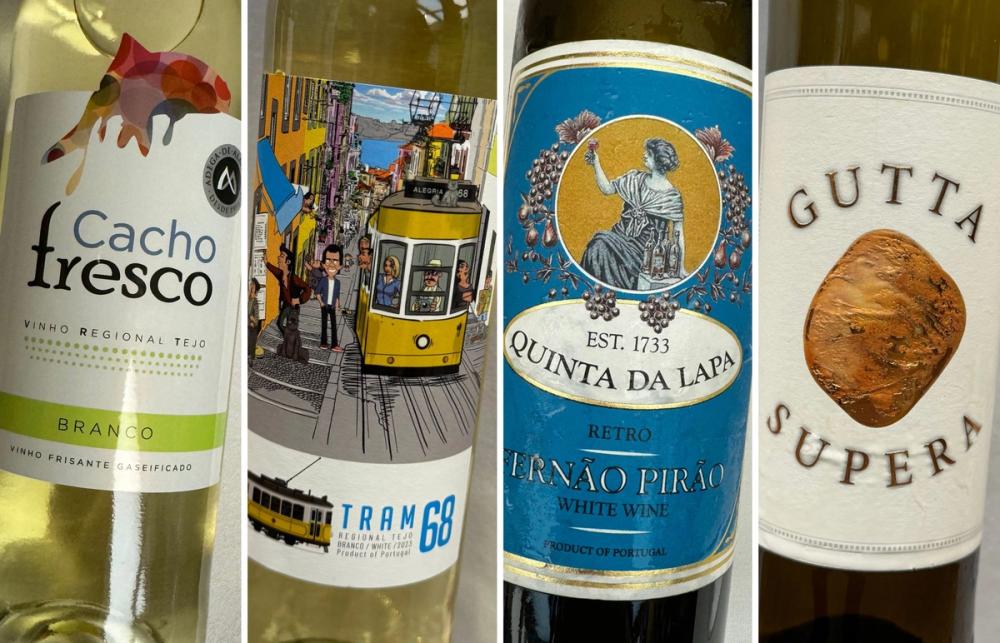
The flexibility of Fernão Pires
Maybe it’s tough to call Tejo 'the home for Fernão Pires'. Also known as Maria Gomes, it’s Portugal’s most planted white grape variety. Given Tejo’s large plantings, however, and the desire of producers at all price brackets to promote its qualities to the world means they’ve got as good a shout as any.
Fernão Pires is quite a Muscat-y grape in terms of its brilliant aromatic potential and diversity to produce sparkling, still and sweet wines. The big difference is the crucial acidity that Fernão Pires can retain, even in the warmth of Tejo, making wines for an apéro on the terrace all the way to the most well stocked of dining tables.
Adega de Almeirim is Tejo’s largest co-op, producing around 20 million bottles per year. A large proportion of that is their Cacho Fresco Branco (ex-cellar €1.30), one of Portugal’s most widely bought wines. 100% Fernão Pires, this is a very good entry level wine with huge mass market appeal. Produced with a touch of spritz in the wine, it was served fairly cold, but still showed fresh green fruits, aromatic grape, and a subtle savoury herb finish. It really showed Fernão Pires to be well suited to wines of this level.
The same could be said for The Tram 68 2023 (ex-cellar £1.76) by another of Tejo’s large co-ops, Adega do Cartaxo. This 100% Fernão Pires was bottled with a kick of residual sugar, but again the fresh green and stone fruits and herbal notes still shone through.
More premium examples showcased where the terroir-focused producers of Tejo can take this grape. Quinta Da Lapa’s Retro Fernão Pirão 2022 (Marta Vines, RRP £20.00) has a deeper colour with sweet and savoury flavour concentration coming from extended skin contact. Green and stone fruits, herb, white pepper, coating lees structure, and a bitter pith finish. Any wine lover would be happy sharing a bottle of this over dinner.
Also on show was Quinta do Paral’s Gutta Supera 2021 from low-yielding, 50-year-old vines on sandy, pebble strewn land. Lots of tropical and citrus fruit depth as you’d expect from such low yields, but the mineral tang gave great freshness and skin contact added a butterscotch and creaminess to the finish.
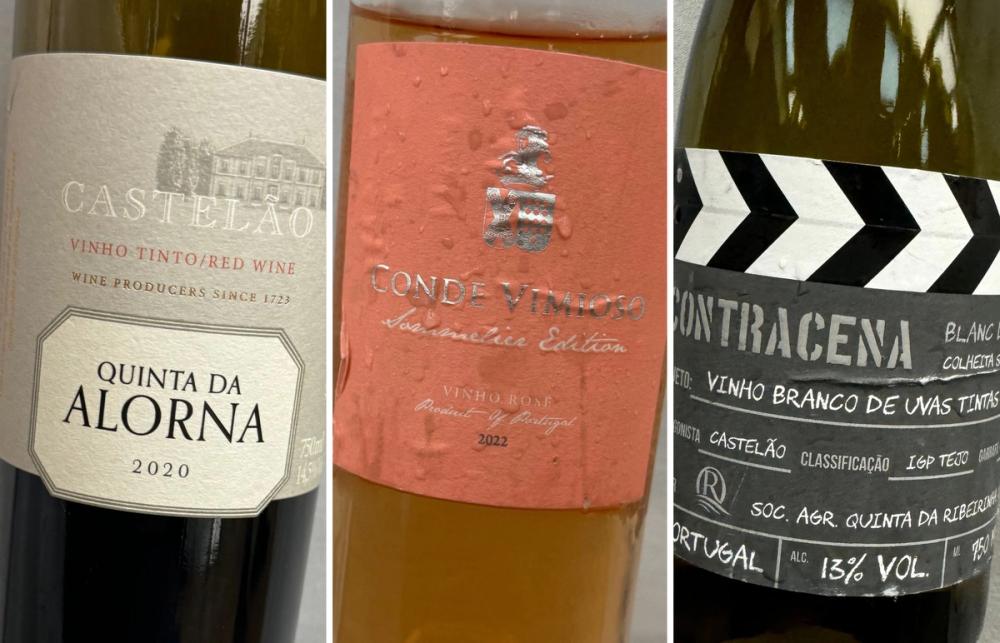
The many faces of Castelão
As much as the likes of Touriga Nacional, Trincadeira, and Aragones are well planted throughout the region, it’s the southern Portuguese speciality of Castelão with which producers of Tejo can claim to specialise. It loves the poor, sandy soils found throughout the southern sub-region of Charneca and can produce wines of great structure, plentiful ripe fruit flavours, and fabulous natural acidity allowing the producers to experiment with their portfolios.
As much as it provides great fruit and acidic balance for blends, the room of 11 producers provided some really interesting varietal Castelãos, all completely different form each other.
My favourite red wine examples were the fruity and rich Quinta da Lapa Castelão 2019 and the smoky, spicy, grippy Quinta Da Alorna Castelão 2020, the latter adorned with delicious red and dark fruits, earthiness, a warming but balanced alcohol and that all important fresh acidity that could see this bottle as a great pairing for grilled meats and vegetables.
The high natural acidity also lends itself well to the production of rosé. Falua’s Conde Vimioso Sommelier Rosé 2022 was vibrant with warming spices and smoke from partial oak ageing, as well as ripe and precise red fruit and a gorgeous coating texture. An excellent gastro rosé that would add something different but equally popular to the pink section of your lists.
And finally one of the favourites on the day in terms of both quality and surprise factor. The Contracena Blanc de Noirs 2023 from Quinta da Ribeirinha. This varietal Castelão ferments without the skins, producing a wine rich in tropical notes of lychees, pineapple, tangerine, blood orange and red apple, but with fabulous texture and coating body.
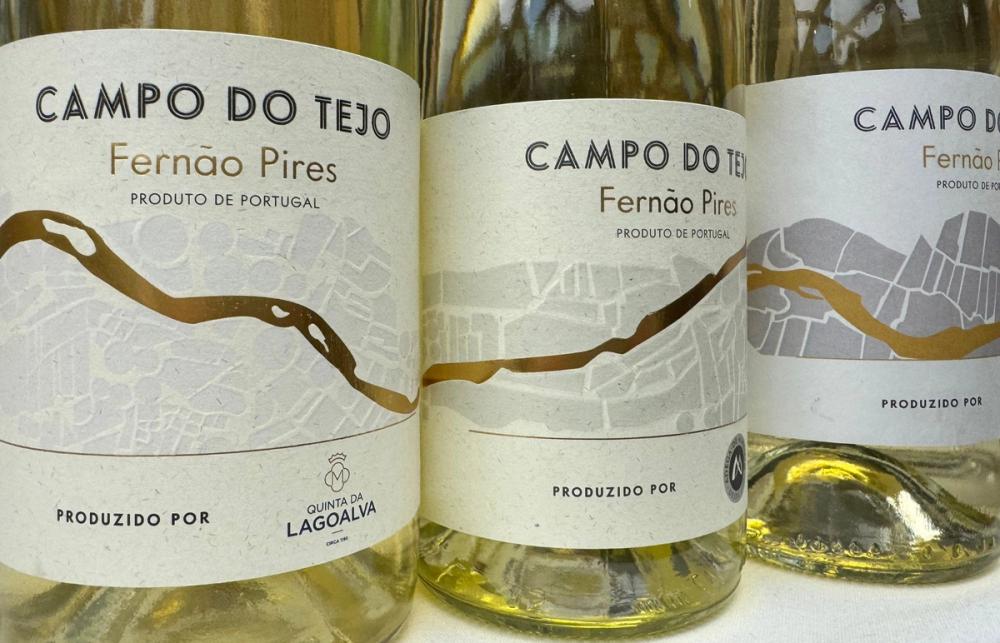
One brand fits all - the new generic campaign for Fernão Pires
Campo de Tejo
This tasting gave Wines of Tejo president, Luís de Castro, the opportunity to showcase its exciting new brand project. Produced and designed in conjunction with Brian Howard of Wine Intelligence, Campo do Tejo is a collaborative approach by the producers of the region to lift the reputation of Fernão Pires and showcase what it can achieve across the region.
This is an invitation to producers up and down the Tejo to bottle their surplus Fernão Pires. Using the one brand policy, the aim is to produce a range of wines that are instantly recognisable on shelves. Any producers can apply to produce a Campo do Tejo wine (with the distinct labels designed using the Google Map view of the Tejo River) as long as they sign up to the strict guidelines. This includes lower intervention viticulture and minimum pricing in order to avoid unnecessary economic pressures.
The brand utilises Brain Howard’s expert insight into the wine market. Fernão Pires grown on the riverbank terroir of Campo naturally produces lighter wine styles, with lower ABVs that fit current consumer trends as well as future tax implications for UK importers. They are all vegan friendly, affordable and versatile. The lighter weight bottle and biodegradable capsule is particularly on point. And, just as importantly, Campo de Tejo is easy for foreigners to say!
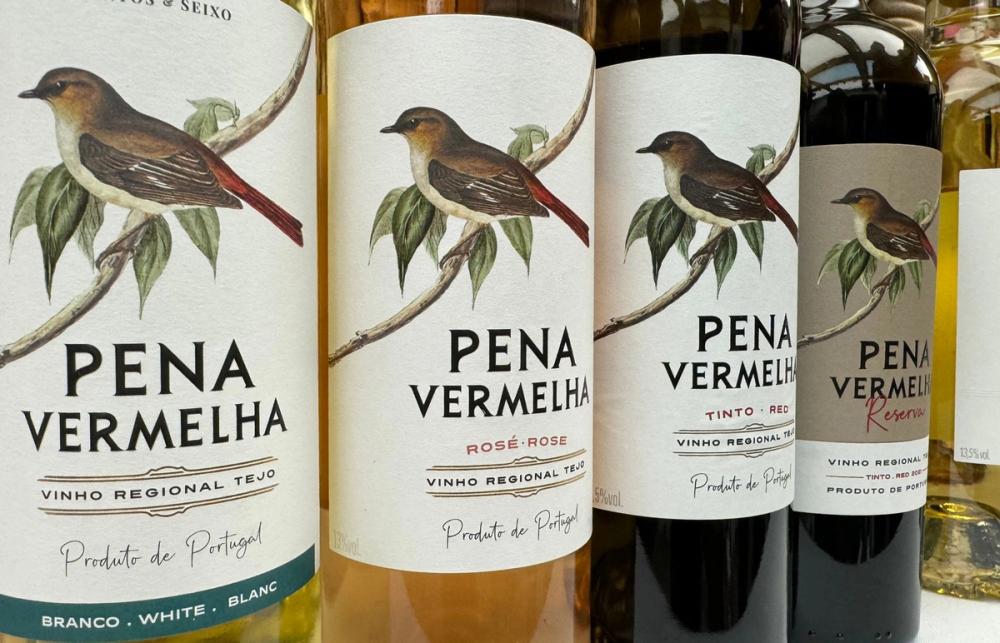
Stunning value ranges
I knew before entering the tasting that the Tejo region is known for producing wines at keen price points. There were plenty of wines in the room that were modestly priced. As ever, some of those wines were very drinkable and fairly priced, and some were very good and offering great value. One producer in particular was showcasing wines so good with the prices so comparatively low, that I simply couldn’t work it out.
Santos e Seixo is a Portuguese wine company that produces wines in many areas including Douro, Alentejo and Vinho Verde. Their Tejo vineyards are high in the schist areas of Beirro and produce several price ranges within its portfolio of whites, reds and rosés resplendent with the indigenous Portuguese varieties to make them stand out on the shelves.
The first of the range I tasted was during Junior’s premium wines masterclass. The Encostas Do Sobral, Vinhas Vehlas 2020 is a blend of Trincadeira, Castelão and Aragonez from 40-year-old plots. Bottled after 12 months in old French oak, the wine delivered sharp, ripe blue and black fruits, black pepper, liquorice and a refreshing herbal and pine lift. It very much held its own in the line-up of seven of Tejo’s finest examples, and all for the princely sum of £3.00 ex-cellar? That had to be a misprint!
I made a bee-line for Santos e Seixo's stand as soon as the masterclass ended. Sure enough, no misprint. The rest of the portfolio followed suit, with the entry level Pena Vermelha range in particular showcasing incredible quality and value. The Pena Vermelha White is a beautifully mineral, stone, tropical and citrus white. The Pena Vermelha Rosé is light, bright and refreshing. The Pena Vermelha Red is fruity, spicy and balanced. And each of them at £1.75 ex-cellar. Daft. I have neither the money nor the organisational capacity to be an importer, but anyone who is, please help me out here!

Premium quality wines on offer
Moving on from the great value on offer, Junior’s masterclass on the premium wines of the region unearthed some truly beautiful wines. Quinta do Casal Branco’s Falcoaria Casal Branco 2021 (Oakley Wine Agencies, RRP £22.00) is 100% Fernão Pires from a 70-year-old vineyard, hand picked, with fermentation beginning in cement before continuing in barriques, where it stays for 10-12 months with battonage throughout.
“You may have noticed,” pointed out Junior, “that this is exactly how many produce white Burgundy."
The wine was complex and concentrated with sweet vanilla spice, perfumed stone fruits, lemon peel, sage leaf, and a notable mineral grip.
Ode Winery dates back to 1902 but has had a rebirth following investment from Australia and 2022 marked the first vintage of this revitalised venture. Its ODE Touriga Nacional Naturamente 2022 (ex-cellar £7.26) was made using traditional foot stomping techniques. The wine was a stunning and concentrated blend of blue and black fruits, earthiness, black pepper, great minerality, with sage and thyme giving a great freshness throughout. The labels are also very cool, inspired by the changing soils across its Bairro vineyards.
Falua Wines is another of Tejo’s producers with operations throughout the country since its inception 30 years ago. The Conde Vimioso Reserva Tinto 2020 (Oakley Wine Agencies, RRP £22.00) is a blend of Touriga Nacional, Cabernet Sauvignon, Castelão, Aragonez and Trincadeira all grown in the southern Charneca region in vineyards littered with the large warming stones.
The wine has 18 months in new oak before bottling, but the sheer concentration and freshness of the black and blue fruits, herbal and pine notes almost mask the oak ageing entirely. There are spicy black pepper and liquorice notes into the finish, but all beautifully integrated. A lovely wine.
For more information about the Wines of Tejo, please contact Emma Roberts at Eviva Communications on emma@eviva.co.uk
To try the wines for yourselves or for further pricing information, please contact the importers or producers directly:
Producers currently imported to the UK:
Falua Wines – Oakley Wine Agencies
Quinta Da Alorna – Alliance Wine
Quinta da Lapa – Marta Vine
Quinta do Casal Branco – Oakley Wine Agencies
Producers currently seeking representation:
Adega De Almeirim, Adega do Cartaxo, Casal da Coelheira, Enoport Wines, ODE Winery, Quinta da Ribeirinha, Santos e Seixo
Mike Turner is a freelance writer, presenter, educator, judge and regular contributor to The Buyer.
